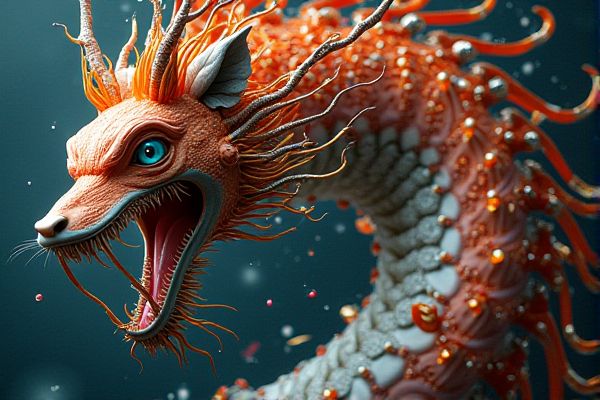
AI enhances the creative process in arts and design by providing innovative tools and techniques that inspire artists and designers. Machine learning algorithms analyze patterns in existing artworks, allowing for the generation of unique content that reflects various styles and aesthetics. Designers utilize AI for automating repetitive tasks, streamlining workflows, and enabling experimentation with new design concepts. The collaboration between human creativity and AI's analytical capabilities fosters a dynamic environment for artistic exploration and innovation.
AI usage in arts and design
Generative Design Tools
Generative design tools can significantly enhance creativity in arts and design by offering innovative solutions to complex problems. These tools, such as Autodesk's Fusion 360, utilize algorithms to explore a vast array of design possibilities, increasing efficiency and inspiration. Artists can leverage these technologies to create unique works that may not have been conceived through traditional methods. As the integration of AI continues to evolve, the potential for novel artistic expressions and design efficiencies may become more pronounced.
AI-Driven Art Creation
AI-driven art creation offers artists new tools to enhance their creative processes. Programs like OpenAI's DALL-E can generate unique images based on textual descriptions, providing inspiration and innovative designs. This technological advancement could streamline workflows in institutions like design studios, freeing up time for more complex tasks. The possibility of collaborating with AI opens up avenues for artistic exploration that were previously unavailable.
Personalized Design Experiences
AI in arts and design allows for the creation of personalized design experiences tailored to individual preferences. By analyzing user data, AI can generate unique artworks or products, enhancing customer satisfaction. For example, companies like Adobe leverage AI tools to offer customized design suggestions. This technology not only streamlines the creative process but also opens up new avenues for artistic expression and collaboration.
Style Transfer Techniques
Style transfer techniques enable artists and designers to apply the aesthetic of one image to another, creating unique visual outputs. These techniques can enhance creative processes by providing new ways to experiment with styles, as seen in platforms like DeepArt. Artists may find it possible to generate multiple interpretations of a single concept quickly, broadening their portfolio. Institutions like the Rhode Island School of Design may adopt these technologies to integrate innovation into their curriculum, offering students a competitive advantage.
Creative Collaboration Platforms
AI tools can enhance the creative process in arts and design by offering innovative solutions for artists and designers to explore. Creative collaboration platforms such as Adobe Creative Cloud facilitate easier communication and idea sharing among team members, leading to unique project outcomes. The possibility of using generative design algorithms can inspire new artistic styles or forms that were previously unimaginable. This synergy between AI and human creativity fosters an environment where experimentation can flourish, potentially resulting in significant advancements in various artistic fields.
Automated Image Editing
AI usage in arts and design can significantly enhance creativity and productivity. Automated image editing tools, such as Adobe Photoshop's AI features, allow artists to streamline their workflows and focus on more complex tasks. This technology also offers the possibility of generating unique design ideas that might not be conceived through traditional methods. Artists and designers can leverage these advancements to stay competitive in the evolving creative industry.
Virtual Reality Art Spaces
AI usage in arts and design can enhance creativity by providing new tools for artists to experiment with. Virtual reality art spaces offer immersive experiences that could attract a broader audience, making art more accessible. For instance, platforms like Oculus have the potential to revolutionize how users interact with digital artwork. This combination might lead to innovative collaborations between artists and technologists, creating unique artistic expressions.
Emotion Recognition in Art
AI has the potential to enhance arts and design by analyzing emotional responses to artwork, leading to more engaging and relevant creations. Emotion recognition algorithms can assess viewer reactions, allowing artists to tailor their work to evoke specific feelings. For example, designers at institutions like the Rhode Island School of Design can leverage this technology to refine their projects based on audience feedback. This approach may increase the impact of art by fostering a deeper connection between the creator and the observer.
Interactive Art Installations
AI can enhance arts and design by offering tools that streamline creative processes, making them more efficient. For example, an interactive art installation might use AI algorithms to adapt to viewer responses, creating a personalized experience. This adaptability can attract more visitors, increasing engagement and potentially revenue for artists and institutions. The integration of AI technologies in such projects presents a chance for continuous innovation within the creative landscape.
Data-Driven Design Trends
AI usage in arts and design presents opportunities for innovation and personalization. Data-driven design trends can help artists understand audience preferences, enabling targeted creations that resonate more deeply. For instance, a designer leveraging platforms like Adobe Sensei can analyze user behavior to enhance their work. The integration of AI tools may lead to improved efficiency and unique artistic expressions.
 techknowy.com
techknowy.com